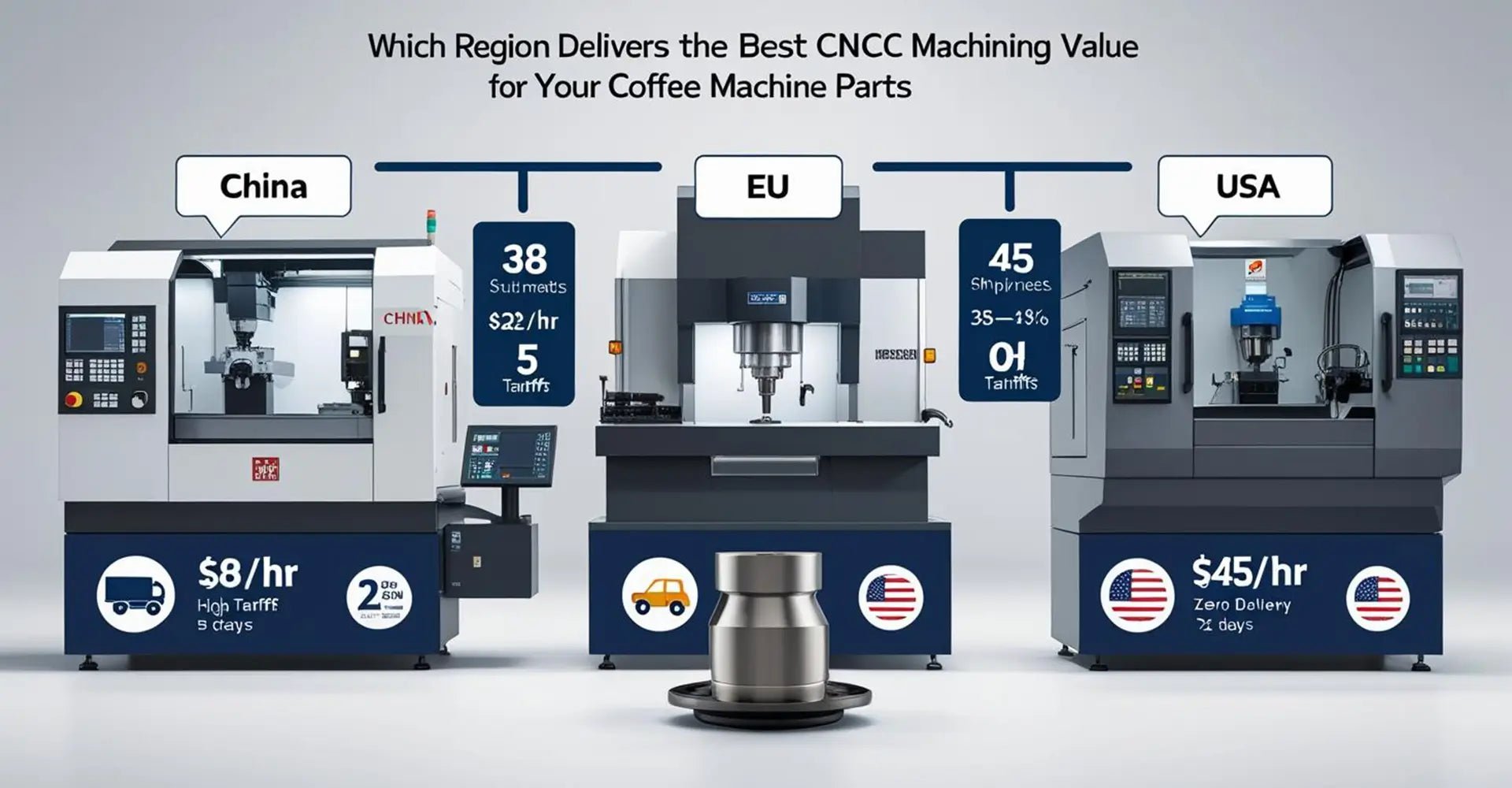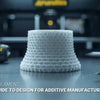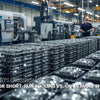Which Region Delivers the Best CNC Machining Value for Your Coffee Machine Parts in 2025?

Which Region Delivers the Best CNC Machining Value for Your Coffee Machine Parts in 2025?
Choosing the right region for CNC machining your coffee machine parts can make or break your project budget. With hourly rates ranging from $8 in China to $45 in the US, plus varying tariffs and shipping costs, the cheapest option isn't always the most cost-effective. Furthermore, when manufacturing under 1,000 units, regional selection becomes even more critical as fixed costs heavily impact your total landed cost.
Quick Answer: For low-volume coffee machine parts manufacturing cost analysis, China offers the lowest base rates at $8/hour, but 54% tariffs and shipping costs often make EU production at €32/hour more economical. Meanwhile, US manufacturing at $45/hour becomes viable for orders above 700 units due to zero tariffs and minimal logistics costs.
However, the real story lies in understanding how labor costs, tariffs, shipping expenses, and quality factors combine to create your total project cost. Additionally, recent trade policy changes and supply chain disruptions have shifted the traditional cost advantages between regions. This comprehensive 2025 CNC machining cost comparison: China vs US vs EU will help you make informed decisions for your next project.
Table of Contents
- How Do Hourly Rates Actually Stack Up Across Regions?
- What Impact Do Current Tariffs Have on Your Bottom Line?
- Which Shipping Strategy Minimizes Your Logistics Costs?
- When Does Local Production Beat Offshore Manufacturing?
How Do Hourly Rates Actually Stack Up Across Regions?
Raw hourly rates tell only part of the cost story when selecting your CNC machining region. While China's $8/hour rate appears unbeatable, productivity differences and setup times significantly affect your final per-unit cost. Therefore, understanding hourly rates for CNC services in China, US, Europe requires looking beyond surface numbers.
Snippet Paragraph
Key Comparison:
- China: $8/hour + 15% longer setup times
- US: $45/hour + highest automation levels
- EU: €32/hour ($35/hour) + best quality-speed balance
Chinese facilities often require additional setup time due to communication barriers and less automated equipment. Consequently, a seemingly simple 4-hour job might take 5-6 hours in China versus 3.5 hours in a highly automated US facility. Moreover, European facilities typically offer the sweet spot with moderate rates and excellent efficiency, making them particularly attractive for precision coffee machine components requiring tight tolerances. When considering CNC machining services, these productivity factors become crucial for optimal regional selection for CNC machining under 1k units.
What Impact Do Current Tariffs Have on Your Bottom Line?
Tariff policies dramatically reshape CNC machining economics, especially for US-bound shipments from China. As of 2025, these trade barriers can add over 50% to your base manufacturing cost. Understanding the tariff impact on CNC machining costs (2025) is essential for accurate budget planning.
Current Tariff Snapshot:
- China to US: 54% on most machined parts
- EU to US: 0-15% depending on material
- Intra-EU: 0% tariffs + streamlined customs

A $10,000 CNC machining order from China faces an additional $5,400 in tariffs when shipped to the US. In contrast, the same order from Germany incurs minimal duties and often qualifies for preferential treatment. Therefore, even with higher base labor costs, EU production frequently delivers better total landed costs for US customers ordering coffee machine parts. This trade-off between labor costs and tariffs in CNC outsourcing significantly impacts your final decision. When working with various CNC metals and plastics, tariff classifications can vary, affecting your overall cost structure.
Which Shipping Strategy Minimizes Your Logistics Costs?
Shipping costs and delivery times vary dramatically based on your chosen region and transportation method. Smart logistics cost optimization for small-batch orders can save thousands on your project budget.
Shipping Cost Comparison (per kg):
- China air freight: $8/kg (14-day delivery)
- EU truck/rail: $4/kg (5-day delivery)
- US domestic: $2/kg (2-day delivery)
Air freight from China costs double compared to EU ground transportation, while also taking three times longer. Additionally, sea freight from China reduces per-kilogram costs to $1.50 but extends delivery to 35-45 days, making it unsuitable for most coffee machine part orders. European suppliers offer the best balance of speed and cost, particularly for orders under 500 units where air freight becomes prohibitively expensive from Asia. When manufacturing industrial machinery components, these shipping considerations become even more critical due to weight and size constraints.
When Does Local Production Beat Offshore Manufacturing?
Break-even analysis reveals surprising cost crossover points where domestic or regional production becomes more economical than offshore alternatives. Understanding these thresholds helps optimize your sourcing strategy using a comprehensive total landed cost model for international manufacturing.
Break-Even Thresholds:
- US production: Cost-effective above 700 units
- EU production: Sweet spot for 300-800 units
- China production: Best for 1,000+ units (despite tariffs)

Local production eliminates tariff risks and reduces lead times, but higher labor costs require sufficient order volumes to achieve economies of scale. US manufacturing becomes competitive at 700+ units due to advanced automation and zero import duties. Meanwhile, EU production offers the most consistent value proposition for mid-volume orders, combining reasonable labor costs with excellent logistics and quality standards. For projects requiring rapid prototyping before full production, local suppliers often provide faster iteration cycles and better communication.
Conclusion
Regional selection for CNC machining coffee machine parts requires careful analysis of multiple cost factors beyond simple hourly rates. While China maintains the lowest base costs, tariffs and shipping expenses often favor EU or US production for orders under 1,000 units.
The smartest approach involves calculating total landed costs including labor, tariffs, shipping, and quality risks for your specific order volume. Generally, EU production provides the best value for 300-800 unit orders, US manufacturing works best above 700 units, and China remains viable for large volumes despite current trade barriers. Therefore, use comprehensive cost modeling rather than focusing solely on hourly rates to make your regional selection decision. By carefully considering all these factors, you can achieve significant savings while maintaining quality standards for your coffee machine parts manufacturing project.
[External Links Recommendation]
[Hourly rates for CNC services in China][^1]
[Tariff impact on CNC machining costs (2025)][^2]
[Logistics cost optimization for small-batch orders][^3]
---
[^1]: Understanding the hourly rates for CNC services can help you make informed decisions about outsourcing and budgeting for manufacturing projects.
[^2]: Exploring the potential tariff impacts can prepare businesses for future cost changes and help in strategic planning.
[^3]: Learning about logistics optimization can significantly reduce costs and improve efficiency for small-batch manufacturing.





